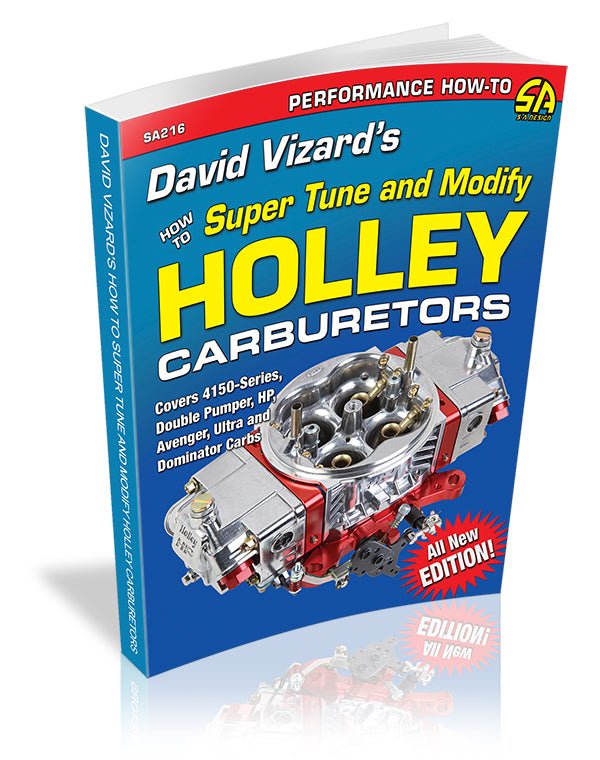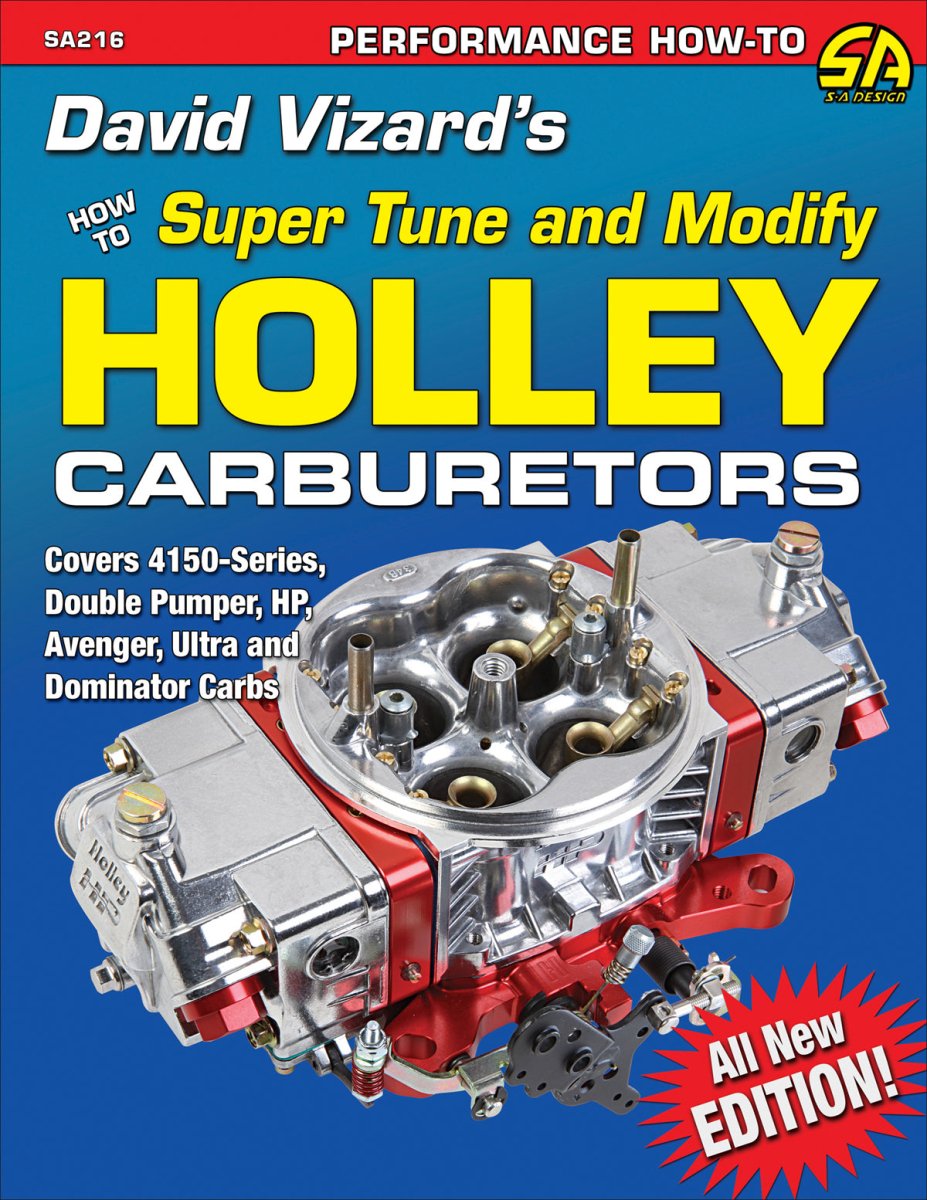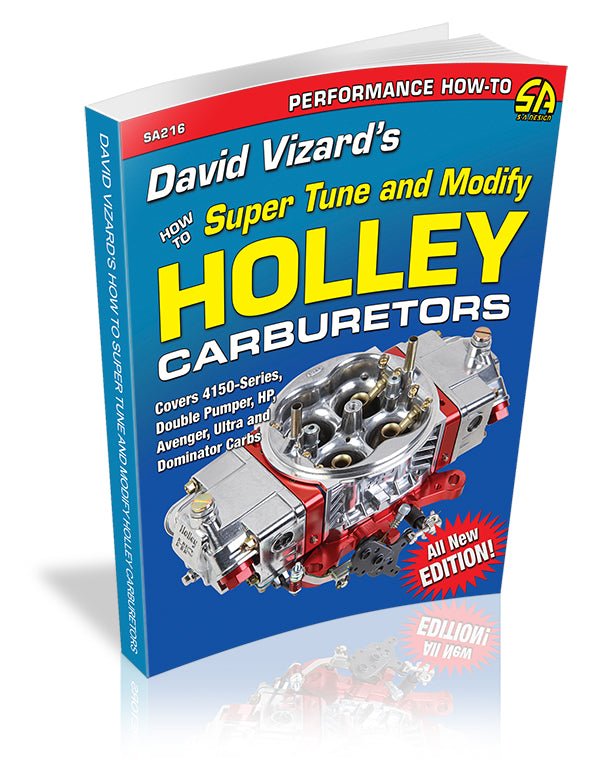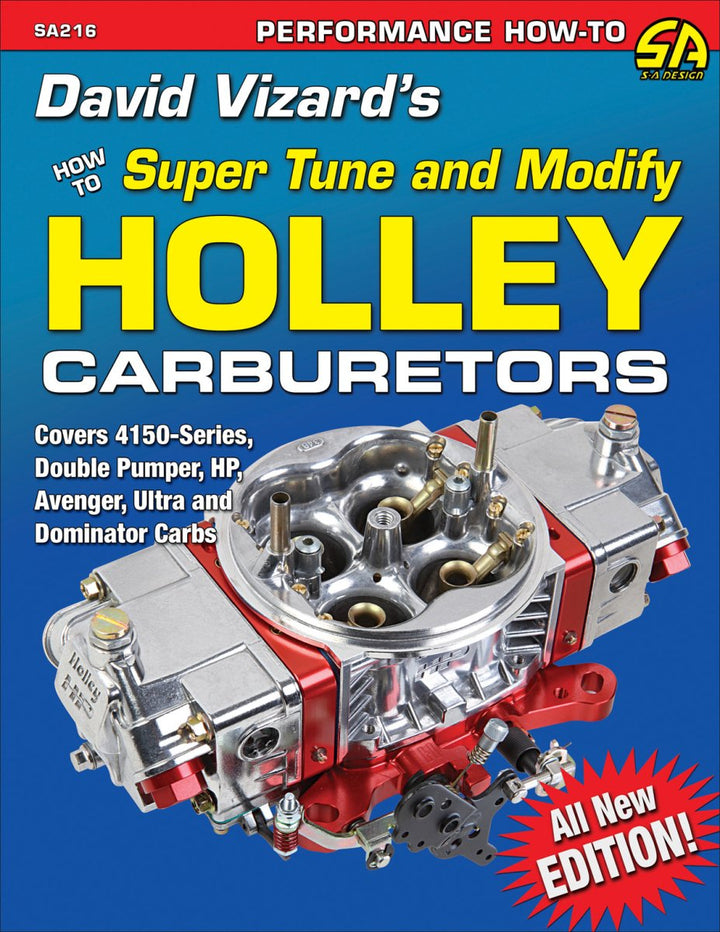While many of today's modern cars have moved past carburetors and into high-tech fuel-injection systems, most cars from the highly collectible eras are still running carburetors. Carbs are comparatively inexpensive, highly tunable, and do not require laptops, expensive tuning equipment, or computers to function. And by far, the most popular carb still in use is the Holley carb.
In David Vizard's How to Super Tune and Modify Holley Carburetors, best selling author Vizard explains the science, the function, and most important, the tuning expertise required to get your Holley carburetor to perform its best for your performance application, whether it's street, strip, supercharging, or race applications. Holley has been a best-selling subject for years, and this much-needed update guides you through the traditional 4150 Double Pumper, Dominator, and 4160 vacuum secondary models, as well as all the recent releases from Holley, including the Ultra Street Avenger and Ultra HP Series Carbs.
With its high degree of tuning ease, and with all the new models coming into the market, the knowledge of an expert like Vizard is a requirement to meet your performance goals, now more than ever. This book is an essential addition to any hot rodder's library.
Acknowledgments
Introduction
Chapter 1:
A Carb’s True Function
Functions of a Carburetor
The Impossible
Mileage Improvement
Chapter 2:
Operating Principles
Basic Function
Exploring Venturi Properties
Applying the Venturi Effect
Air Correction Function
Calibration Considerations
Boosters 1
Idle and Transition System
Accelerator Pump System
Carb Sizing
Carb Options
Chapter 3:
Calibration Requirements
Max-Power Mixture Ratio
Idle Mixture
Cruise Mixture
Chapter 4:
Simple Mixture Measurement
The First Circuits to Calibrate
Accelerator Pump
Plug Reading
Track Practice
Stagger Jetting
Fuel Wash
Ignition Timing
Chapter 5:
Mileage Calibration
Mileage Makers and Breakers
Vaporizing Factors
Enhancing Combustion Conditions
Cylinder Fill
The Spark
Some Unconventional Systems
Economy Tuning
Chapter 6:
Carburetor Selection
How Much Carb CFM is Needed?
Volumetric Efficiency
High-Performance Dual-Planes
Multiple Carbs
Spacers
Vacuum Secondaries
Sizing with Alcohol-Based Fuels or Nitrous
Brake Specific Air Consumption
Chapter 7:
Booster Science
Venturi Action
Booster Gain
Carb Sizing
Atomization Requirements
What’s It Worth?
Annular Discharge Booster Myth
Chapter 8:
Idle and Transition Calibration
Idle Mixture Calibration
Oxygen Sensors
Road Test
Chapter 9:
Full-Power Circuit Calibration
Main Jet
Cruise Calibrations
Max-Power Calibrations
Target Air/Fuel Ratios
Fuel Curve and Emulsion Wells
Weather and Altitude Changes
Vacuum Secondary Systems
Chapter 10:
Accelerator Pump Circuit Calibration
Accelerator Pump Circuit
Accelerator Pump Components
Preliminary System Tune
Final System Tune
Part-Throttle Response
Chapter 11:
Ram Air and Heat Management
Air Temperature
Fuel and Charge Temperatures
Artificial Charge Cooling
Super-Cooling Cool Can
Cool Fuel Compromises
Evaporative Cooling 1
ACC in Practice
Performance Conclusions
Chapter 12:
Fuel Systems
Jet Extensions, Fuel Slosh and Fuel Level
Floats and Bowls
Needles and Seats
Pressure Regulators
Fuel Lines and Filters
Mechanical Fuel Pumps
Electric Pumps
Chapter 13:
Calibrating for Various Fuels
Oxygenated Fuels
E85
Metering Blocks
Chapter 14:
Improving Airflow
The Source of all Induction
Making More Air
Flow Mods: Phase One
Flow Mods: Phase Two
Flow Mods: Phase Three
Power Increase
Chapter 15:
Intake Port Matching
Simple Port Matching
Complex Port Matching
Intentional Port Mismatching
Source Guide





